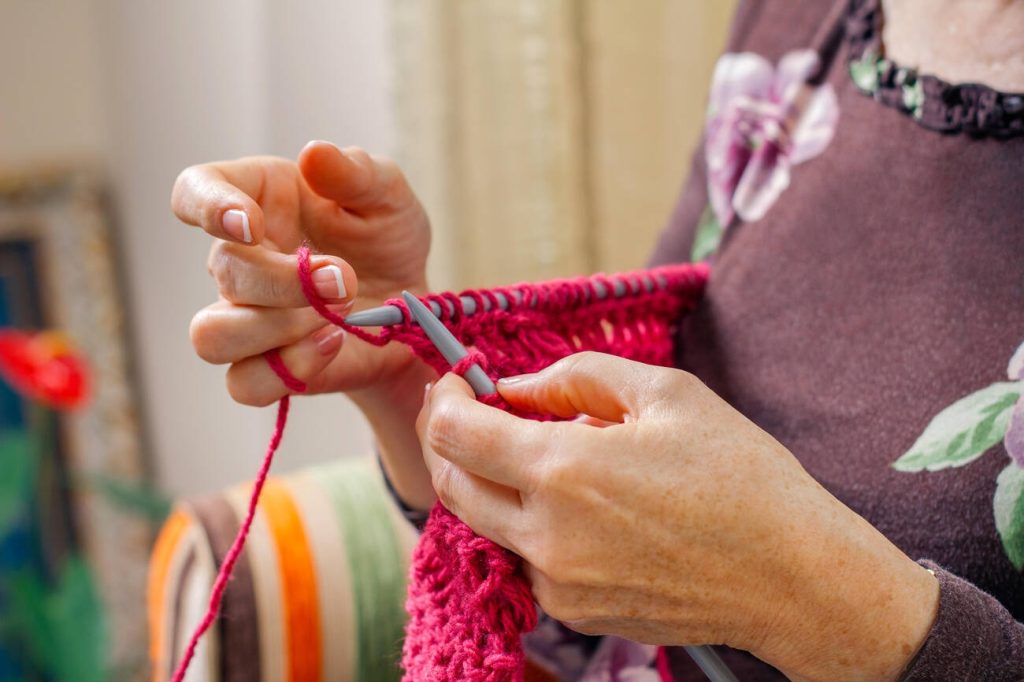Do you ever feel as if you’re unraveling the threads of confusion between weaving and knitting? Let’s clear the air! Weaving and knitting may seem like two sides of the same fabric coin, but their differences are as distinct as night and day. Get ready to dive into the intricate world of these textile crafts to uncover what sets them apart.
History of Weaving and Knitting
The history of weaving and knitting shows how these techniques have evolved over time. Cultural significance plays a vital role in the development of both crafts, with weaving often tied to traditions and identities, while knitting embodies a sense of community and creativity. Evolutionary origins trace back to ancient times when basic methods transformed into intricate designs. Technological advancements like mechanized looms and knitting machines revolutionized production processes, making fabric creation more efficient. Global influences introduced new materials and styles to traditional weaving and knitting practices, enriching artistic expressions worldwide. Understanding the rich history behind these crafts not only connects you to diverse cultures but also inspires you to explore your creativity through fabric production.
Tools and Techniques
Tools and techniques for these fabric production methods involve various types of looms and needles. Here’s a list to help you navigate through the differences:
- Loom vs. Needles: Looms are used in weaving, creating structured fabrics, while needles are primarily for knitting, offering more elasticity.
- Warp and Weft: Weaving involves interlacing warp and weft yarns to create fabric with limited stretch, whereas knitting produces more elastic fabric using loops.
- Circular vs. Straight: Knitting can be done with straight needles or circular ones, providing different outcomes in the fabric’s construction.
- Elasticity and Stretch: Knitted fabrics offer more stretch due to the structure created by using needles, unlike woven fabrics that have less give.
Understanding these distinctions will enhance your fabric creation journey!
Fabric and Texture Differences
In fabric production techniques, weaving creates structured fabrics with limited stretch, while knitting results in more elastic fabric using loops. When comparing elasticity, knit fabrics tend to be more flexible than woven ones due to the nature of their construction. Weaving utilizes warp and weft yarns interlaced on a loom, resulting in sturdy but less stretchy textiles. Knitting involves creating interlocking loops of yarn with needles, offering greater elasticity and comfort. Texture variations between knitted and woven fabrics are noticeable, with knits having a softer feel compared to the firmer texture of woven materials. Understanding these differences in fabric properties can help you choose the most suitable technique for your desired outcome.
| Elasticity | Yarn Usage |
|---|---|
| More elastic | Knitting yarns sold in balls/skeins |
| Limited stretch | Weaving yarns sold on cones |
| Stretch Differences | Texture Variations |
|---|---|
| Knit fabrics are more flexible | Knits have a softer feel |
| Woven fabrics are sturdier but less stretchy | Wovens have a firmer texture |
Versatility in Patterns
When combining techniques, you can create unique fabric designs. Here’s how it can elevate your creations:
- Pattern complexity: By mixing weaving and knitting methods, you can achieve intricate patterns that stand out.
- Design flexibility: Blend the versatility of both techniques to experiment with different design elements effortlessly.
- Texture variety: Incorporate a range of textures by merging weaving’s structured feel with knitting’s soft touch.
- Color combinations: Explore endless color possibilities by fusing the broad spectrum of hues available in both weaving and knitting.
This fusion allows for unparalleled artistic expression, enabling you to craft one-of-a-kind pieces that showcase your creativity and skill in a truly exceptional way.
Structural Variances
Exploring the structural variances in fabric production techniques reveals unique qualities that distinguish woven and knitted fabrics. When comparing elasticity, knitting excels with its greater stretch capabilities than weaving. Yarn usage differs as well; knitting yarns are commonly found in balls or skeins, whereas weaving yarns are typically sold in cones for loom setup, impacting cost and availability. In terms of fabric thickness, weaving tends to produce denser fabrics compared to the airier textures achieved through knitting. Additionally, tension control plays a crucial role, with knitting allowing more flexibility in adjusting tension during the process compared to the more fixed tension control inherent in weaving.
| Categories | Knitting | Weaving |
|---|---|---|
| Elasticity | High | Limited |
| Yarn Usage | Balls or Skeins | Cones |
| Stretch Capabilities | Greater | Lesser |
Skill and Time Requirements
To master the art of fabric production, you’ll need to invest time in honing your skills and understanding the various techniques required. Here are some important points to keep in mind:
- Skill development: Embrace the learning curves that come with weaving and knitting to enhance your abilities.
- Time commitment: Dedicate consistent time to practice and improve your fabric production techniques.
- Practice needed: Repetition is key to developing proficiency in both weaving and knitting.
- Mastery levels: Strive for continuous growth and aim to achieve higher levels of expertise through dedication and perseverance.
Modern Applications
Modern applications of fabric production techniques involve utilizing both weaving and knitting to create innovative and versatile textile products. Textile innovations are driving the industry towards sustainable fashion practices, blending traditional artisan craftsmanship with digital techniques for enhanced creativity. Creative collaborations between designers, artisans, and technologists are pushing the boundaries of what can be achieved with these age-old techniques. Sustainable fashion is at the forefront, encouraging mindful consumption and production methods that prioritize ethical sourcing and environmentally friendly practices. The fusion of artistry and technology in weaving and knitting opens up new possibilities for creating unique textiles that cater to diverse consumer needs while promoting a more conscious approach to fashion design.


